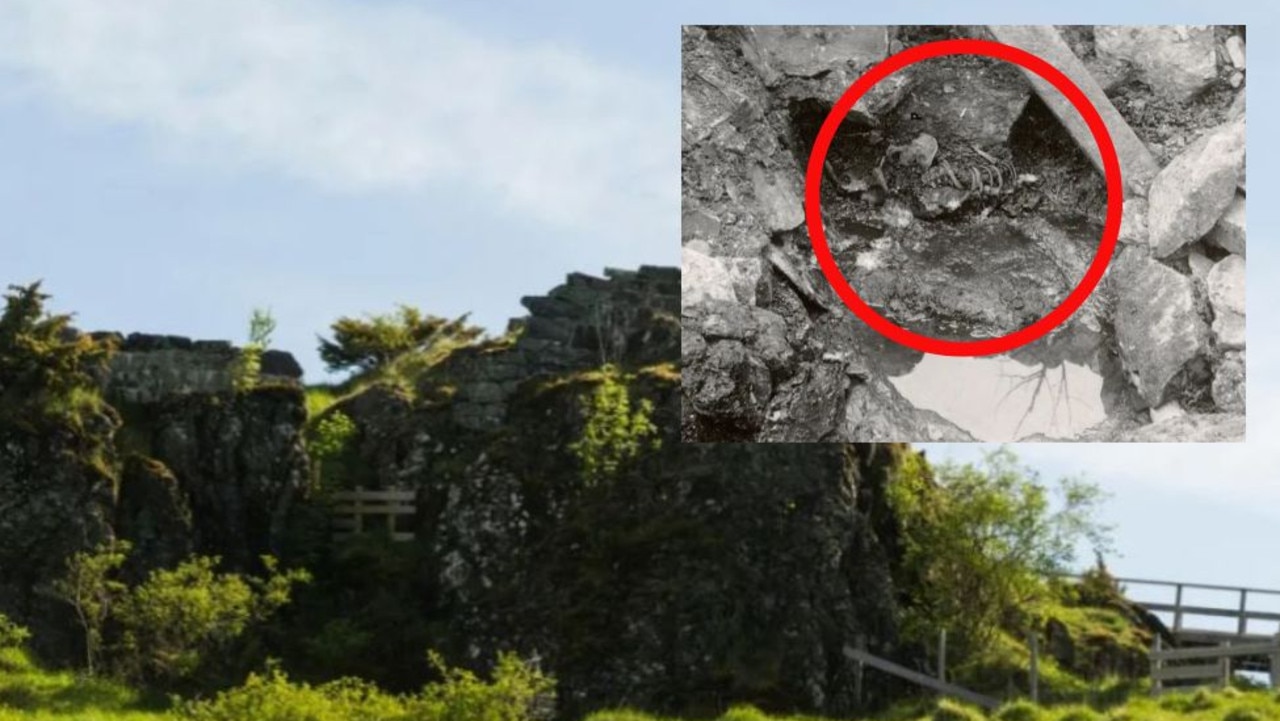Welcome to Rabbit Island, which is exactly as bizarre as it sounds
Just off the coast of Hiroshima is an island that used to be used to make poisonous gas. Now it’s inundated with the most unexpected guests.

My companion and I sit on the beach of his tiny island as the sun sets. He’s lived here all his life, and I feel safe in his silent presence. He lets me do the talking as lightning flashes in the distance over Japan’s Seto Inland Sea.
I turn to watch a man performing a silent kata on a jetty further up the beach. Despite the coming storm, this is a peaceful place. When I turn back, my companion is hopping away into the evening dark.
He’s hopping because he’s a rabbit, and he lives here because this is Okunoshima or Rabbit Island.

The idea of an island populated solely by rabbits is a strange concept, but not in Japan. Here, there are islands for foxes, deer, cats, and even snow monkeys. After all, Japan is an island nation, and there’s an abundance of tiny coastal specks uninhabited by humans. Why not let the animals run wild?
Rabbit Island is located just off the south coast of the Hiroshima Prefecture in the country’s south. The allure of such a place was instant and total: Given that rabbits are, next to the cockroach, nature’s most prolific breeders, how would an island where they are absolute rulers look? Would visitors be knee deep in furry critters?

The deal was sweetened by the fact that human accommodation is available on the island. The National Park Resort Hotel (Kyukamura Okunoshima) is a 65-room facility with a hot spring bath and, of course, a vegan-friendly restaurant.
A two-hour train trip from Hiroshima took me to Tadanoumi Port, where a 15-minute ferry ride carried me to the island. Tadanoumi is peppered in rabbit-themed signage — you know it’s close.
At the ferry port, bags of rabbit pellets are sold alongside beautiful watercolour postcards and bunny-themed paraphernalia. This is the only opportunity for visitors to buy food for the rabbits, as pellets are not sold on the island. That gave me pause: why not?

The pseudo-apocalyptic vision of a fuzzy islander-led siege of a food supply store was more cutely funny than terrifying, but clearly it had put the fear into someone. I bought six bags and hoped it’d be enough.
As the ferry approaches, the island looks like any other: white sandy beaches, a small ring road and dense forests leading uphill to a mountain lookout. Well, almost any other; they aren’t usually blanketed in rabbits.

The park by the jetty is bunny HQ by the time we disembark. It’s as if they’ve learned the ferry timetables. They know that departing visitors have plenty of leftover pellets to dispose of, and they know that new arrivals will have an overwhelming urge to pat.
They’re right.
You haven’t lived until you’ve seen a park teeming with rabbits. Perhaps this is how larger parts of the world were long ago, with nature left to look after itself without us trying to interfere. The rabbits accept our attention until they don’t, and then they run off into the depths of their dominion, flicking their heels at us.

It’s as if they’re letting us know that they don’t really need us, and given the island’s dark human history, they’re right once again.
During World War II, Okunoshima was the site of a poison gas manufacturing facility. The ghastly effects of chemical weapons during the First World War, particularly mustard gas, shocked the world and led to their prohibition in the Geneva Convention.
By the time the world was at war again, use of chemical weapons had dropped off, but belligerent nations still stockpiled them. Japan used the tiny island to make their poison gas in secret, and after the war the island’s facilities and stockpiles were destroyed.

Husks of the factories remain on Okunoshima today, and a small museum provides details of that dark time. It’s an eerie experience to walk around the former facilities built with death in mind … or it would be if you weren’t being followed by a platoon of cute rabbits.
It’s believed the first rabbits arrived on the island sometime in the 1970s. Since then, they’ve done what comes naturally and been left in near-total isolation to do it. What could have been a morbid tribute to a legacy of cruelty has instead become a tourism sensation, a kawaii wonderland for visitors of all ages.

The island’s hotel is a modern, comfortable resort, and there are plenty of entertainment options. There’s a tennis court, a karaoke room, a swimming pool in the summer and even a six-hole golf course. At least six holes, anyway.
The natives aren’t allowed inside the hotel, but that didn’t stop one sandy brown baby rabbit trying on the big sad eyes by the front door each morning.
A series of robust hiking trails snake through Rabbit Island, with some spectacular views on offer at the top of the central mountain. The bunnies are up here too; in fact, wherever you go on the island, the bunnies will be there, particularly if you have pellets.

The nocturnal bunnies aren’t exactly shy during the day, but after the sun goes down they’re out in force. A night-time stroll turns into a furry parade every time, but if you’re after some alone time, the rabbits are great listeners — the big ears aren’t just for show.
Turns out I underestimated both how much rabbit food I would need and how much they’d want it. The six bags disappeared in a matter of hours, and my jacket’s pockets gained several new holes in the process. It’s not like the rabbits are starving or anything, either; the pellets must taste that good.

To visit an all-animal island is a curious experience. It’s a look into a lost world, a land left to the fickle fancies of nature. The rabbits haven’t bred out of control, and the vegetation is healthy and plentiful. The bunnies have reached a sort of equilibrium with nature — a skill we humans haven’t quite mastered.
Back on the shore, the storm is on a steady path towards the island. It’s time to head inside. I spare a thought for the bunnies — how will they protect themselves from the deluge? On my way back I pass a golf cart, one of the island’s few powered vehicles.
On the floor is a blanket of bunnies huddled together and peering out at me. Life finds a way.



